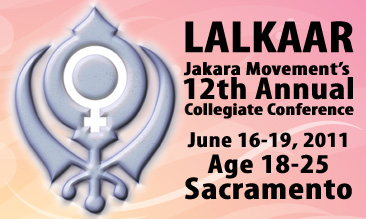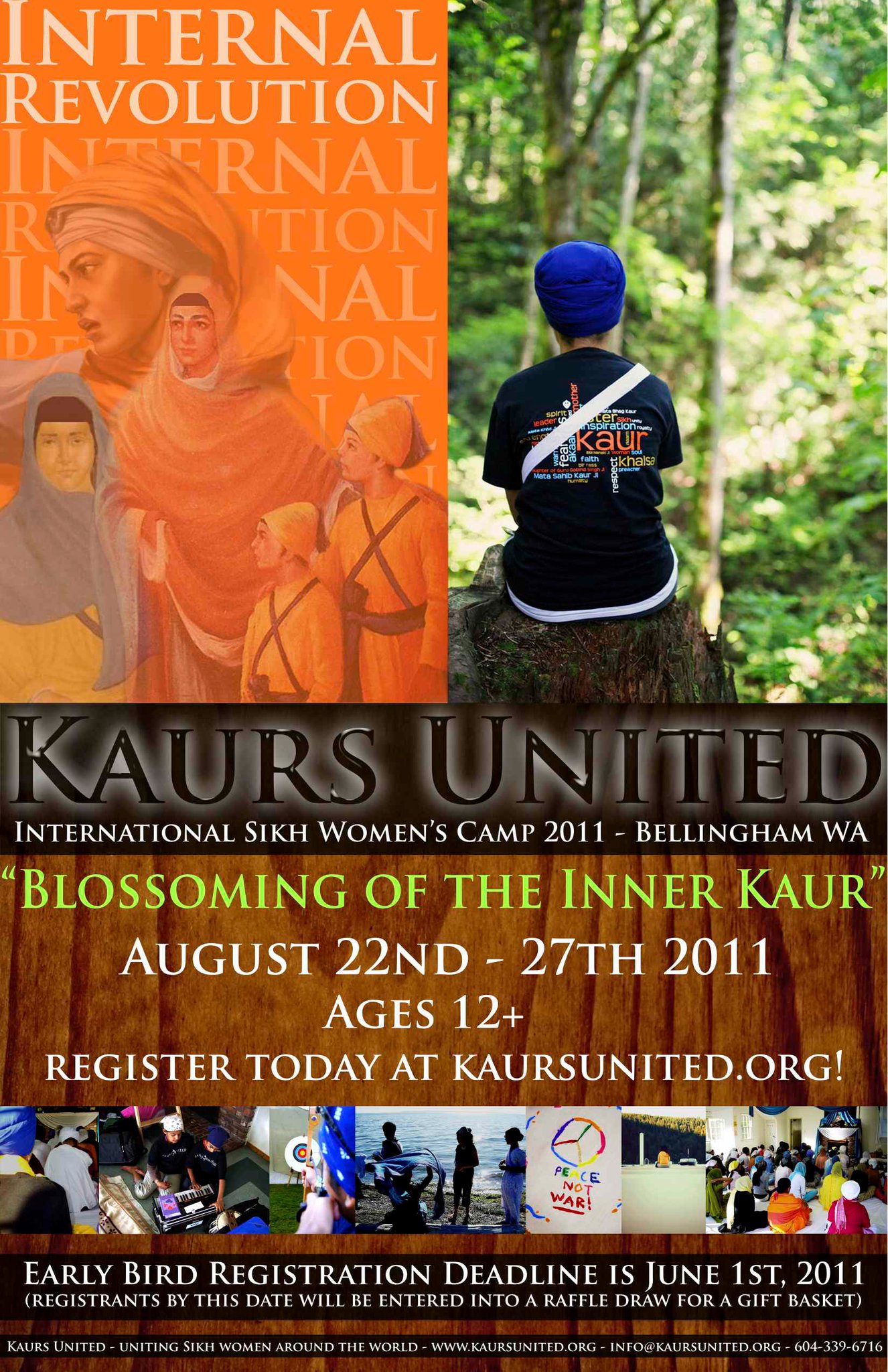
The Roar of a Lioness: Sikh Women in the Diaspora
Our mothers and grandmothers would be proud. If we take a moment to pause, we’ll see the amazing mobilization that is occurring in the diaspora around Sikh women’s issues, particularly by youth. I’m not quite sure if it is a legit rise in websites or events or whether we are simply paying more attention to the topic. Regardless, it is clear that there are now more forums and platforms for discussion cultivating the need for women (and men!) to come together and address issues affecting Half the Sky. This post will give a round-up of some amazing work that is happening in our community, bringing together our qaum to discuss important issues affecting Sikh women.
 {Kaurista} It is clear that Sikh women, like all women around the world, value an open space to discuss issues that directly impact us. Whether it is conversations about clothes, hair, identity or our activism – there needs to exist a space that is catered to providing Sikh girls and women with a sense of unity. This type of comraderie cannot be understated – it impacts an individual’s self esteem and confidence in a substantial way. With the launch of Kaurista.com and the immediate posting of the link all over Facebook, it is hard not to notice how much support there is for this type of forum. Kaurista provides conversations on six different topics including, Lifestyle, Style & Beauty, Family, Inspiration and Health & Wellness. One of my favourite sections of the website is “Ask Kaurista” where questions related to wanting to marry a sardar, going to prom, or overcoming alcohol abuse are answered. The site is not only aimed at Sikh girls. In fact, it actively includes Sikh men in discussions – and perhaps the hope is that through these types of discussions, Sikh men will value how truly dynamic Sikh women are!
{Kaurista} It is clear that Sikh women, like all women around the world, value an open space to discuss issues that directly impact us. Whether it is conversations about clothes, hair, identity or our activism – there needs to exist a space that is catered to providing Sikh girls and women with a sense of unity. This type of comraderie cannot be understated – it impacts an individual’s self esteem and confidence in a substantial way. With the launch of Kaurista.com and the immediate posting of the link all over Facebook, it is hard not to notice how much support there is for this type of forum. Kaurista provides conversations on six different topics including, Lifestyle, Style & Beauty, Family, Inspiration and Health & Wellness. One of my favourite sections of the website is “Ask Kaurista” where questions related to wanting to marry a sardar, going to prom, or overcoming alcohol abuse are answered. The site is not only aimed at Sikh girls. In fact, it actively includes Sikh men in discussions – and perhaps the hope is that through these types of discussions, Sikh men will value how truly dynamic Sikh women are!
{HERSTORY}
A few weeks ago, members of SAFAR Institute for Sikh Feminist Research put together an event titled, Sikhi & Gender (In)Equality. Our guest blogger, Tarnjit Kaur, introduced us an analysis of this inequality in her post. The event was supported by the Campaign Against Female Feoticide, KaursUnited and the Sikh Activist Network (SAN). SAN is now presenting another fabulous event, titled HERSTORY: A Workshop on Women’s Empowerment [see event page here]. The event (open to both men and women) will focus on violence against Punjabi Sikh women and how the concept of honor impacts these acts. The event will include a discussion with Dr. Harshinder Kaur – the first female physician to give a speech in Punjabi at the International Conference held at the United Nations.
 {Lalkaar} The Jakara Movement will be hosting it’s 12th annual conference, and this year’s topic will be focused on Kaur Voices. Young men and women will come together in Sacramento in June 2011 to “discuss and work towards ending sexism, genderism, racism, casteism, and other social injustices impacting our community”. Having attended the last Kaur Voices conference in 2006, it will be interesting to see how our community has progressed on issues affecting Sikh women in the past five years. This is perhaps one of the first forums that was created to support the discussion of Sikh women’s issues – several initiatives, focused on enhancing equality within our community, were created based upon conversations that occurred at this conference. Registration is now open.
{Lalkaar} The Jakara Movement will be hosting it’s 12th annual conference, and this year’s topic will be focused on Kaur Voices. Young men and women will come together in Sacramento in June 2011 to “discuss and work towards ending sexism, genderism, racism, casteism, and other social injustices impacting our community”. Having attended the last Kaur Voices conference in 2006, it will be interesting to see how our community has progressed on issues affecting Sikh women in the past five years. This is perhaps one of the first forums that was created to support the discussion of Sikh women’s issues – several initiatives, focused on enhancing equality within our community, were created based upon conversations that occurred at this conference. Registration is now open.
{KaurStyle} As mentioned earlier, Sikh women are dynamic and many women struggle with, what they may consider, conflicting identities. KaurStyle is a website which encourages Sikh women to be comfortable discussing issues such as fashion, style and trends and staying true to Sikhi. The site is a great way of helping to instill a sense of security within Sikh women, celebrating their desire to be true to themselves. Much too often, young Sikh girls feel conflicted by what they are taught at home and what they experience at school or at work. What KaurStyle aims to do is suggest that we don’t necessarily have to choose between these identities – Sikh women should be encouraged to be comfortable with being exactly that – a Sikh woman.
 {Kaurs United} An international camp aimed at young Sikh women (ages 12 and up) will be taking place in August 2011. Titled, “Blossoming of the Inner Kaur”, the camps aims to help strengthen the spiritual lives of Sikh women. What I love about the KaursUnited initiative is that they focus very heavily on young Sikh women. Reaching out to girls in their teens is critical and incredibly important in helping them formulate confidence in themselves and their relationship with Sikhi. Kaurs United is one of the only organizations i am aware of that is actively focused on this age group of Sikh women.
{Kaurs United} An international camp aimed at young Sikh women (ages 12 and up) will be taking place in August 2011. Titled, “Blossoming of the Inner Kaur”, the camps aims to help strengthen the spiritual lives of Sikh women. What I love about the KaursUnited initiative is that they focus very heavily on young Sikh women. Reaching out to girls in their teens is critical and incredibly important in helping them formulate confidence in themselves and their relationship with Sikhi. Kaurs United is one of the only organizations i am aware of that is actively focused on this age group of Sikh women.
We hope there will be lots more updates on these initiatives, and initiatives like these in the future. We’ll keep you updated!
Book Recommendation: for those readers interested in learning more about global issues affecting women, we highly recommend Half The Sky by Nicholas Kristof and Sheryl WuDunn.















Love Kaurista.com – Best Site EVER!!!!!!!!!!
Thank you for sharing all this information! These events and websites are well designed and organized. We are really raising the standard and giving Sikh women a real voice.
A great post Sundari! Let's make change happen together.
What are the explicit norms of the conference? Given one gender will have priviledge and this gender is likely to be already over-represented among those with educational priviledge within the wider community, and also that the dis-priviledged gender faces in the wider community issues of othering that are specific to it in a way dis-similiar to the other gender, and that the other gender's success and achievement are often explicitly expressed as goals of the wider society, this seems to be a conference with structural inequities. While the participation level may be ok from the dis-priviledged gender at the particular conference, maybe because other spaces with less inequity may not be available, over the longer term it will not be surprising if the level of engagement for the dis-privileged gender will be lower. This may be borne out by the level of activity of the priviledged gender, while those in the priviledged gender space may attribute problems of participation of the dis-priviledged gender to some inherent or socially-mediated fault within the dis-priviledged gender. If each gender is as capable of the other of looking past the needs of the out-group for their own purposes, then structrural inequities however couched or justified will lead to the ends they will.
TLH admins – would it not be a good idea to add Kaurista.com to the list of links on your website?
Would it be somewhat correct to say on one hand there is the position that the feminist aspect of Sikhi has been marginalized and on another that, as any religion is created and not revealed and may now change as a result in part of the movement of Punjabi-Sikh women into the Diaspora with it's more advanced feminist practice.
And also that there would be resistence to change from men who otherwise would have authority to changes in this structure of Sikh society? Or that resistence would also be from those who see Sikhi as a minority community in need of protection and support?
My personal concern is to figure out if indeed Sikhi as revealed by the Gurus contains the nidus of feminist change, or if feminist change is not really indicated within the scripture. This would be the Nikky Guninder Kaur Singh position I think. Versus the thought that there was not a misinterpretation of our Scripture that led to patriarchy, but that our Bani was not actually concerned with feminist liberation e.g. the position of Doris Jakobsh
Some typos in there, was typing in a hurry
hey thanks…Kaurista seems a nice site!